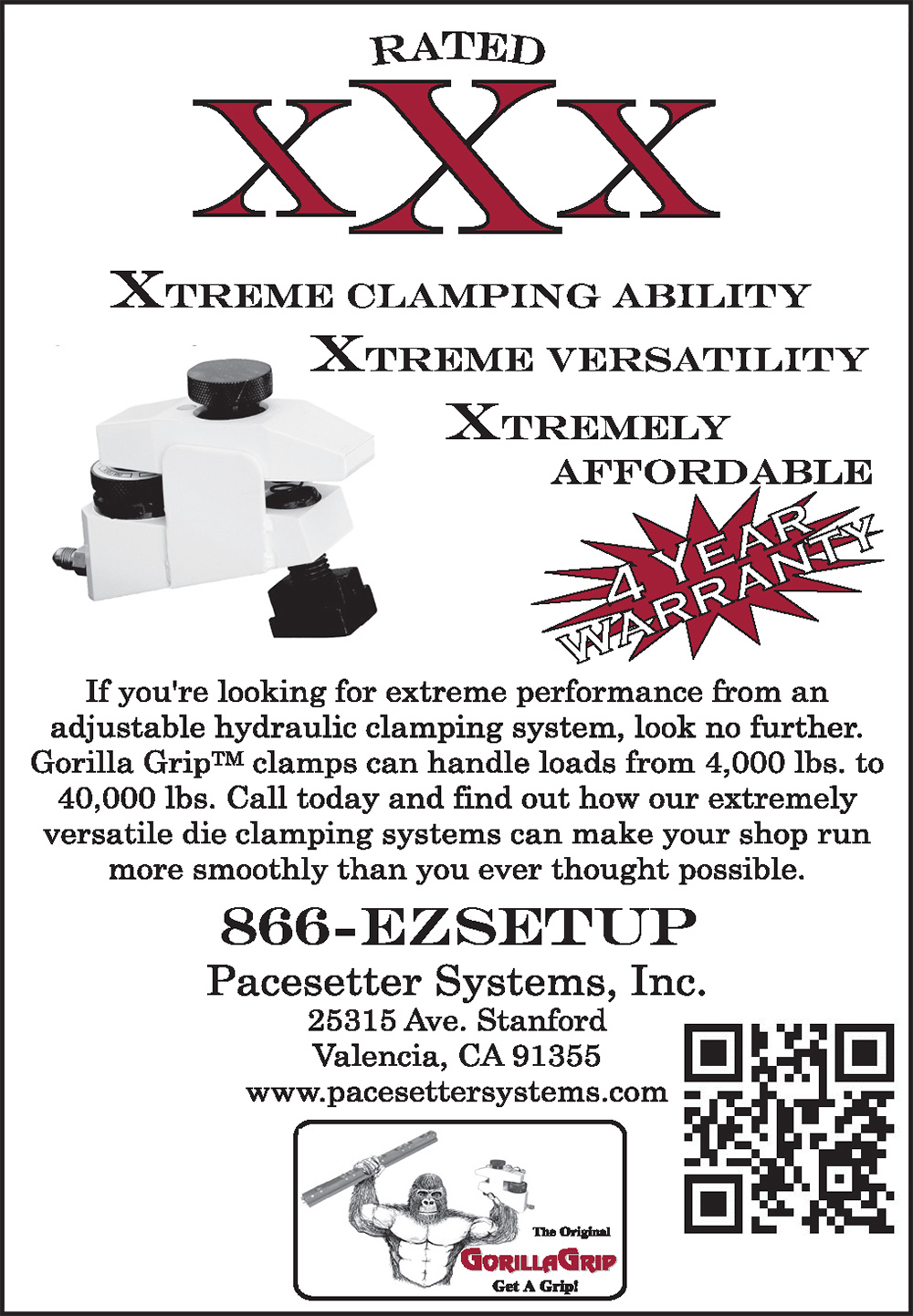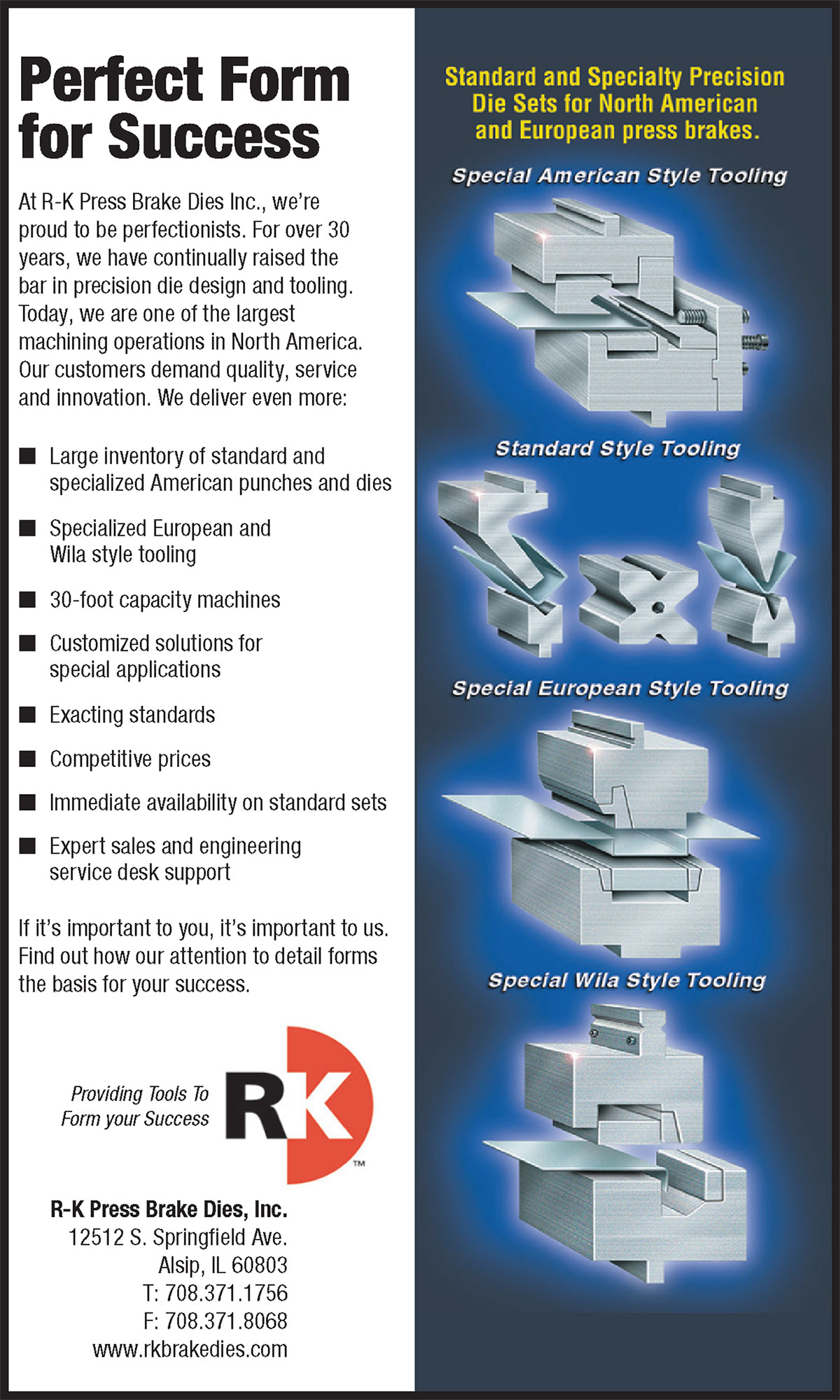hree macro forces drive significant change in the world of forming. They don’t necessarily paint a rosy picture, but there is good news to come.
The introduction of fiber lasers about a decade ago injected excitement and optimism into the profiling sector of fabrication, but faster speeds and higher throughput has created new issues downstream. The long-held standard for CO2 lasers was two press brakes for every laser. With fiber, that number can double depending on the part makeup.
OEM and job shops alike are being challenged to find profitability in low-volume/high-mix manufacturing environments. An easy task for a laser but, without the right technology in place, this type of manufacturing environment can significantly reduce the efficiency of the bending process due to increased setups per day on the press brake.
According to a 2018 Deloitte report, 89 percent of manufacturing executives agreed that companies cannot find qualified applicants for their manufacturing-related positions. Pair this with the high price of adding floor space and the idea of “throwing more labor at the problem” is not a feasible option.
In addition, if there are tools that won’t go into the tool storage—they are either used infrequently, are heavy or are a special shape—operators can still create programs using such tools offline or through the control. The program will then be sent to the machine, allowing the operator to use the press without using the tool changer associated with it. When the press brake is done with the tools, the operator can take those tools out and the press brake will change tools just as it would for any high-run part. The tools don’t have to be in storage in order to use the press brake.
 OEMs and job shops alike are being challenged to find profitability in low-volume/high-mix manufacturing environments.
OEMs and job shops alike are being challenged to find profitability in low-volume/high-mix manufacturing environments. 
If they aren’t printed out, most companies will have their dimensioned drawings, tool layouts, CAD data or setup information on a separate PC or at a remote location. Any time a part is sent to a press brake, the operator will generally set up the tools needed for the job, locate material and look at the control to figure out how to bend the part. If the operator needs to check a dimension, he or she puts the part down on a table and goes to the control, or walks to the control with the part in hand, to review dimensions or bending sequence.

While it is a form of augmented reality, we prefer to call our solution, Videre, an operator support system, because that’s exactly what it is. By displaying the actual tool (shape, length and install orientation) just above the install location in front of the operator, real-time every time, guesswork is all but eliminated. I believe this has the chance to revolutionize press brake operations.

While it is a form of augmented reality, we prefer to call our solution, Videre, an operator support system, because that’s exactly what it is. By displaying the actual tool (shape, length and install orientation) just above the install location in front of the operator, real-time every time, guesswork is all but eliminated. I believe this has the chance to revolutionize press brake operations.
An on-machine operator support system essentially turns the machine itself into the setup specialist, helping the operator to learn tool shapes, names and metrics. It helps teach length requirements and locations for the selected program.
This type of program shows the operator what the parts look like, not only in the flat but also at every stage of bending until its final 3D state. Operators can understand what they are forming and why each bend is required to form that part in a visual way, within an interactive touch format similar to mobile devices younger employees have grown up using.
www.mcmachinery.com.


